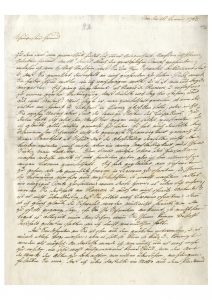Longing for what we have lost 4.3
Winckelmann and the beauty of male friendship
Winckelmann and desire

There is much scholarly debate whether the categories we use to address sexuality are applicable throughout history. Whether or not modern notions of ‘homo-’ and ‘heterosexuality’ are relevant to Winckelmann’s era, one thing is clear: Winckelmann’s love and desire for other men shaped both his life and his scholarship, which celebrates homoerotic desire as an essential part of the appreciation of true beauty. As he writes to Berg:
Furthermore, since human beauty has to be expressed in a general concept, I have observed that those who are not only aware of beauty in the female sex and are hardly or not at all affected by beauty in our sex, have little innate feeling for beauty in art in a general and vital sense. The same people have an inadequate response to the art of the Greeks, since their greatest beauties are more of our sex than the other.[1]
Both Winckelmann’s writings and the way he lived his life have echoed through history. He inspired not only subsequent generations of classical scholars, art historians and connoisseurs, but also early homosexual emancipation campaigners in the nineteenth and twentieth centuries. He has been seen as a figure of freedom, someone who found a way to escape from societal bounds and live a life as true to himself as he could. 300 years after his birth and 250 since his death, his influence has ranged far beyond the scholarly fields to which he contributed.
[1] Winckelmann 1763, 92 (Essay on the beautiful in art)
